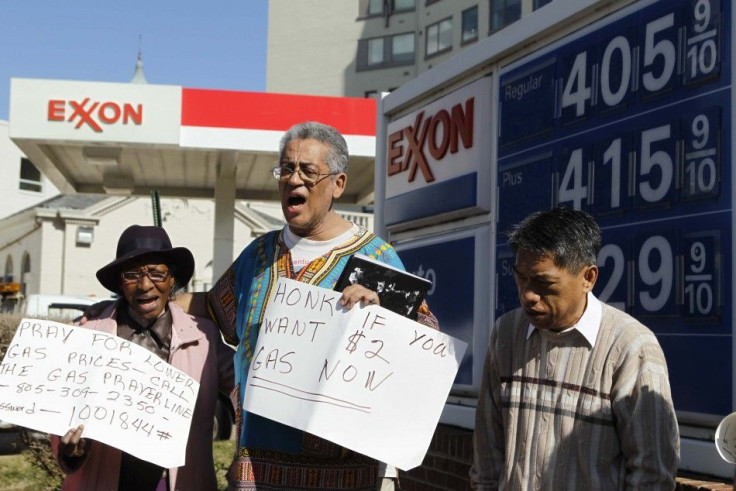Driving For Labor Day? Expect To Pay About A Quarter More Per Gallon Than Last Year
Price gouging or low inventories?

A storm passes through a key U.S. oil-producing region, causing temporary shutdowns in extraction, delivery and refining. The market reacts almost immediately and wholesale gasoline prices climb at the pumps. Low inventories could be the reason.
Even before the interruption to America's fuel addiction by Mother Nature, gasoline stocks were below average, according to the most recent report by the Energy Information Administration.
"Distillate fuel inventories increased by 0.9 million barrels last week and are below the lower limit of the average range for this time of year," said the latest weekly fuel report from the agency.
The upshot is that many gasoline station owners are forced to pay higher prices arising from tight supplies, while others can hold their prices steady as they wait for the effects of short-term market speculation to fade. Some gasoline station owners raise prices whether they actually bought the more expensive gasoline or not. Some call that price gouging; others call it the price the market will bear.
Either way, as America enters a major holiday driving weekend, the cost at the pump will be higher and will likely continue to climb through the Labor Day weekend even if the effects of production shutdowns in the Gulf of Mexico due to Hurricane Isaac are minimal.
The national average coast for a gallon of regular gas was approaching $3.83 Thursday, according to the auto group AAA, after seeing the largest one-day rise in 18 months Wednesday. Last week the average was 12 cents cheaper; a month ago it was 32 cents less; and a year ago the price was $3.61. The West Coast is seeing the highest prices, followed by parts of the Upper Midwest and New York. The last time Americans saw the average price rise above $3.80 was last spring.
"The national average will keep ticking higher, and it's going to be noticeable," Patrick DeHaan, a petroleum analyst at Gasbuddy.com, told the Associated Press.
Drivers in the Gulf Coast region of the U.S. saw prices at the pump rise a dime per gallon in the past week in anticipation of storm-related production cuts. Refineries are likely to start up soon, but rigs and platforms in the Gulf of Mexico, which deliver crude for processing into fuels and downstream petrochemicals, will take longer to start up as they need to be inspected and repaired if necessary.
The speed with which some gasoline station employees went out to change numbers on the price signs has caused some to accuse retailers of price gouging. In Michigan, where a price for a gallon of regular is above $4, state Attorney General Bill Schuette warned this week that his office is monitoring profit margins and costs of gas stations in the state.
"As Labor Day weekend nears, Tropical Storm Isaac, combined with other factors, will likely result in higher prices at the pump," said Schuette. "These circumstances are not a free pass for price gouging. My office monitors gas prices closely, and we will not hesitate to take action if evidence of price gouging surfaces."
The next report comes out Friday, but don't expect any good news from it for the weekend.
© Copyright IBTimes 2024. All rights reserved.












